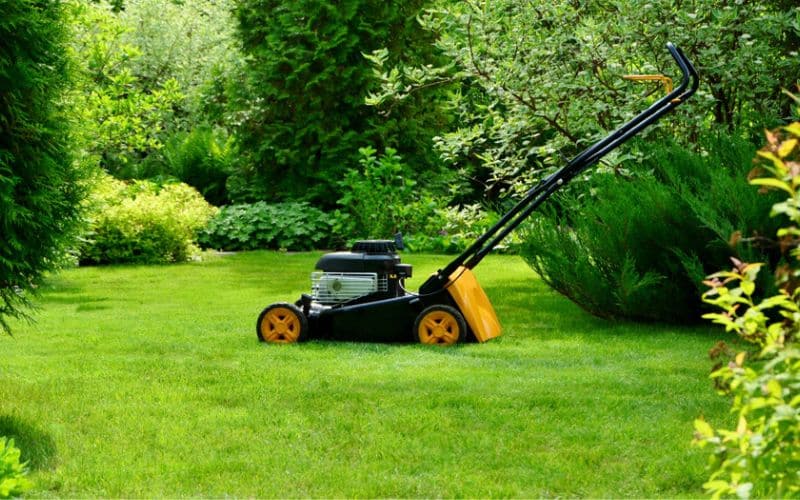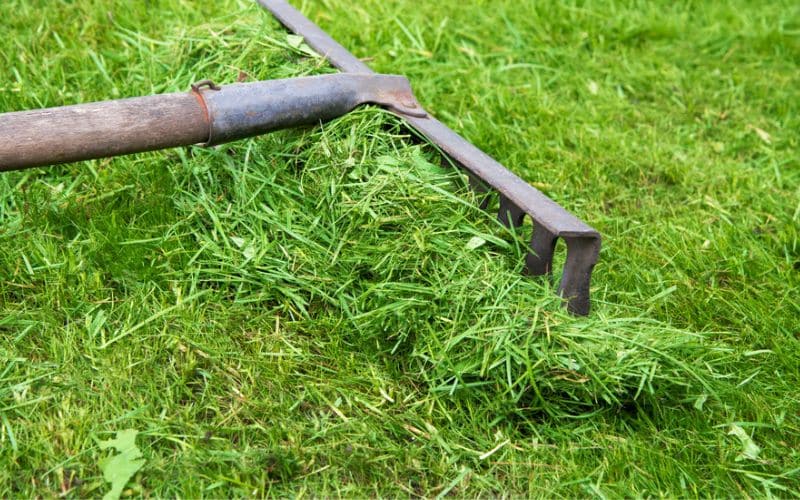
Why is Mowing Your Lawn Important?
Mowing your lawn is more than just an aesthetic practice. It’s a crucial part of lawn care that ensures the health and vitality of your grass. Regular mowing helps to keep your lawn looking neat and tidy, but it also encourages the grass to grow thicker and more evenly. By cutting the grass at the right height, you can prevent weeds from taking over and ensure that your lawn is getting the right amount of sunlight and water.
What is the Ideal Mowing Height for Your Grass?
The ideal mowing height can vary depending on the type of grass you have in your lawn. For instance, cool-season grasses like Kentucky bluegrass and tall fescue typically do well when cut between 2.5 to 3.5 inches, while warm-season grasses like Bermuda and Zoysia grass thrive when cut between 1 to 2 inches. Remember, you should only be cutting the top third of the grass blade each time you mow. This practice, known as the “one-third rule,” helps to maintain the health of your grass and prevent stress.
How to Choose the Right Lawn Mower for Your Lawn?
The right lawn mower can make a significant difference in your lawn mowing experience. If you have a small to medium-sized lawn, a push mower might be sufficient. However, for larger lawns, a riding mower can save you time and effort. When choosing a lawn mower, consider factors like the size of your lawn, the type of grass, and the terrain. For instance, if you have a sloped lawn, a self-propelled mower might be a good choice.
What is the Best Mowing Pattern for a Beautiful Lawn?
Believe it or not, the pattern in which you mow your lawn can have an impact on its appearance and health. Alternating your mowing pattern each time you mow can help prevent soil compaction and ensure even wear on the grass. For instance, if you mowed in a vertical pattern last time, try a horizontal or diagonal pattern next time. This also helps the grass blades to stand up straight for an even cut.

How Often Should You Mow Your Lawn?
The frequency of lawn mowing depends on the growth rate of your grass, which can be influenced by factors like the type of grass, the season, and the weather. As a rule of thumb, aim to mow your lawn when the grass is about one-third taller than the recommended mowing height. This might mean mowing once a week during the peak growing season and less often when the growth slows down.
Why Should You Avoid Mowing Wet Grass?
Mowing wet grass can lead to a host of problems. Wet grass clippings can clump together and block the mower’s deck. This not only makes mowing more difficult but can also lead to an uneven cut. Furthermore, wet grass is slippery, making it a safety hazard when mowing. Therefore, it’s best to wait until the grass is dry before you mow.
What Happens When You Cut Grass Too Short?
Cutting your grass too short, a mistake often referred to as “scalping,” can be detrimental to your lawn’s health. It can weaken the grass, making it more susceptible to diseases and pest infestations. Moreover, it can expose the soil, leading to a higher risk of weed growth. Therefore, it’s crucial to maintain the right mowing height for your type of grass.
How to Maintain Your Mower Blade for an Efficient Cut?
A dull mower blade can tear the grass blades instead of making a clean cut, leading to a ragged and brownish appearance. Therefore, it’s essential to keep your mower blade sharp. Depending on the usage, you should sharpen the blade at least once or twice during the main mowing season. Also, check the mower blade regularly for any signs of damage and replace it if necessary.
Expert Tips for Mowing a Slope: Is it Different?
Mowing a slope can be challenging, but with the right technique, you can do it safely and efficiently. When mowing a slope with a push mower, mow across the slope, not up and down. This helps prevent the mower from rolling back or tipping over. If you’re using a riding mower, however, it’s safer to mow up and down the slope to prevent the mower from tipping over sideways.

How to Use Lawn Clippings to Your Advantage?
Instead of bagging and disposing of your grass clippings, consider using them as a natural mulch for your lawn. Grass clippings can help to retain soil moisture, suppress weeds, and provide nutrients to your lawn as they decompose. This practice, known as grasscycling, is an excellent way to recycle nutrients and reduce yard waste.
What are Some Professional Tips for a Perfect Lawn?
Maintaining a perfect lawn requires a bit of knowledge and effort. Here are some professional tips:
- Water your lawn deeply but infrequently to encourage deep root growth.
- Fertilize your lawn at the right time based on the type of grass and the climate.
- Aerate your lawn once a year to relieve soil compaction and improve nutrient absorption.
- Overseed your lawn in the fall to fill in bare spots and promote a thick and lush lawn.
In conclusion, here are the key takeaways to remember for making your lawn mowing easier and more efficient:
- Mow your lawn regularly, but avoid cutting the grass too short. Aim to remove only the top third of the grass blades each time.
- Choose the right lawn mower for your lawn size and type of grass. Maintain your mower well, especially the blade, for an efficient cut.
- Alternate your mowing pattern each time to prevent soil compaction and ensure even wear on the grass.
- Avoid mowing when the grass is wet to prevent clumping and slipping.
- Consider grasscycling, the practice of leaving grass clippings on the lawn, to provide natural mulch and nutrients.
- If your lawn is on a slope, mow across the slope with a push mower and up and down with a riding mower for safety.
- Invest time in other lawn care practices like watering, fertilizing, aerating, and overseeding to maintain a healthy and beautiful lawn.
Remember, lawn mowing is not just a chore, but a key aspect of lawn care that contributes to the health and beauty of your lawn. Happy mowing!
Colin Macmillan is a seasoned entrepreneur and the CEO of Riverwood Landscape, a leading landscaping company based in Canada. He has been at the helm of the company since leaving high school, demonstrating his strong leadership skills and business acumen.
Colin’s expertise lies in various aspects of landscaping, including lawn care, interlocking, sod installation, and commercial maintenance. His hands-on approach and dedication to the craft have been instrumental in building Riverwood Landscape into a reputable brand.
One of his most notable achievements is the creation of a successful landscape franchise that services multiple locations. This accomplishment underscores his strategic thinking and ability to scale operations effectively.
Colin has also had the privilege of working with Guelph Hospital for landscaping and maintenance, a testament to the trust and reliability that his company has earned over the years.
His professional mission is to offer the best services and experiences for customers, a goal that he tirelessly pursues. Colin’s commitment to excellence and customer satisfaction continues to drive the growth and success of Riverwood Landscape.








